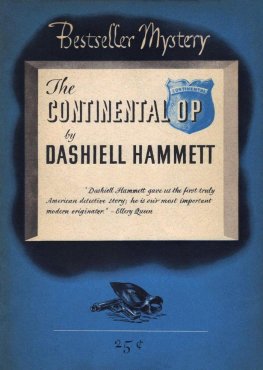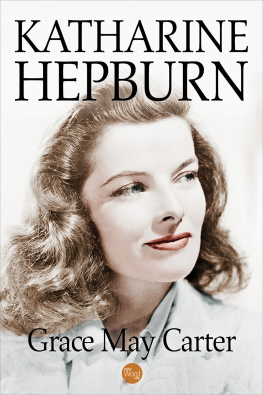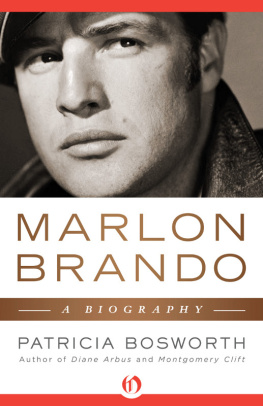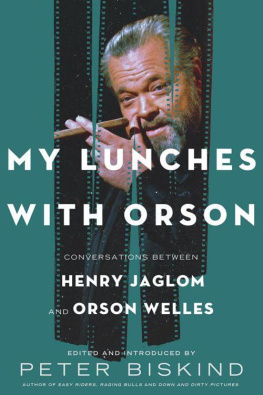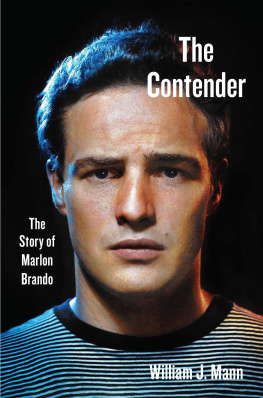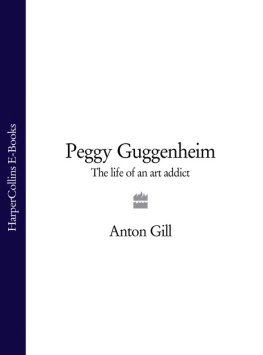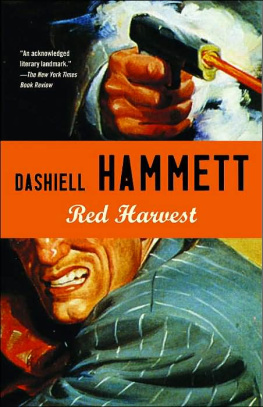Contents
Guide
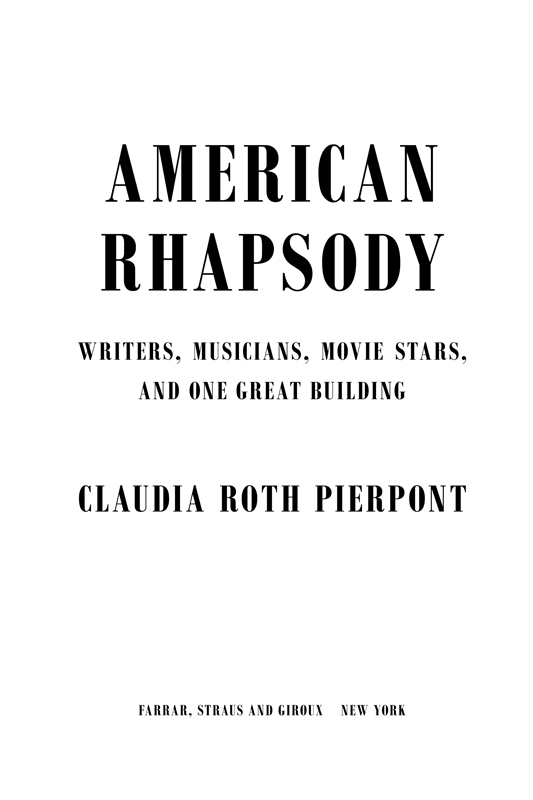
The author and publisher have provided this e-book to you for your personal use only. You may not make this e-book publicly available in any way. Copyright infringement is against the law. If you believe the copy of this e-book you are reading infringes on the authors copyright, please notify the publisher at: us.macmillanusa.com/piracy.
For Etta and William,
Lena and Albert,
and for Lucy,
who became Americans
American Rhapsody was George Gershwins original title for the revolutionary work that his brother Ira persuaded him to name, instead, Rhapsody in Blue . Gershwin wanted to call his jazzy masterpiece American because hed conceived it as a musical kaleidoscope of Americaof our vast melting pot, of our unduplicated national pep, of our blues, our metropolitan madness. And, musically speaking, a rhapsody is a sequence of distinctive parts, not as formally structured as a symphony but held together, in Gershwins case, by recurring themes; it was a form that left the composer room for spontaneity and digression within the story he had to tell. Gershwins work also fulfills the celebratory promise that the nonmusical idea of rhapsodizing holds for us. His kaleidoscopic America reflects all the romance and bright innocence that the young musical genius could summon in 1924, when both he and the country were coming into their own. A true melting-pot portrait, the Rhapsody mixes jazz and Rachmaninoff and Tin Pan Alley with unself-conscious freedom. Its the creation of an American as proud and grateful and ecstatically wondering as only a child of immigrants could be.
The immigrants exaltation of America is a well-known, even common component of our national story (quite apart from the genius that Gershwin brought to it). My grandmother, a Polish Jewish immigrant, used to tell of the journey she made across Europe, from Krakow to Cherbourg, alone, in the early 1920s. Her train arrived late at the French port city, and, in a panic, without a word of French, all she could do in the hope of finding the ship on which she had booked passage was to run through the streets near the port, shouting, America?! For the rest of her life, she spoke in a way that could undoubtedly be called rhapsodic about the country that had saved her. Gershwins father, a penniless immigrant from St. Petersburg, began his American life in the 1890s, working in a shoe factory in New York City. He had gone through a number of occupationsthe alternatives seemed endlessby the time that, in 1910, he and his wife bought a piano for the familys Lower East Side apartment. More than a musical instrument, it was a symbol of the opportunities they had made possible for their sons.
But there are, of course, very different kinds of American stories. James Baldwins stepfather, the son of a slave, came north from New Orleans in the 1920s, another sort of immigrant. The Harlem community into which Baldwin was born, in the year of Rhapsody in Blue , was a haven only when compared with the violent racial nightmare of the old country his stepfather had escaped. There has never been any doubt that it is possible for two people of different races or conditions to live in the same time and more or less the same place and yet inhabit two different Americas. It is possible even for one person to inhabit two Americas: Peggy Guggenheim grew up on New Yorks wealthy Upper East Side, but her family was turned out of a hotel in Vermont for being Jewish no less firmly than Baldwin was turned away from a New Jersey diner for being black. Guggenheim eventually helped establish the canon of modern American art, and Baldwin, with his vision of a shared and mutually beneficial future, helped sustain a belief in the country through the racial traumas of the sixties. Yet both Guggenheim and Baldwin ultimately left America for good, as did several others whose stories constitute the cultural history chronicled in this book.
It came as a surprise, when I surveyed the completed book, that figures who emerged from backgrounds of immigrant success (including F. Scott Fitzgerald, on his Irish Catholic mothers side; and Guggenheim, through both of her German Jewish grandfathers) contrasted not only with long-settled Yankees and Midwesterners (Katharine Hepburn, Orson Welles, Marlon Brando) but with Americans who fled the country with something like the desperation of those who had traveled half the world to get here and then stayed away for the rest of their lives. Edith Wharton and Nina Simone, this collections chronological bookends, were as different as two women could be, and so were their reasons for leaving. Setting off for France in 1906, Wharton, a wealthy novelist from East Coast aristocracy, was escaping the social and cultural backwardness of American society. Simone, a Southern-born black musician, moved to France some seventy years later to escape the racial prejudice of the country that she called the United Snakes of America. And there are others, temporary exiles, for whom leaving the country was the only way to see it clearly or to do the kind of work that seemed prohibited by American provincialism or economics. Fitzgerald also fled to France, on the counsel of his friend Edmund Wilson, to write the serious book he could never manage on these shoresit turned out to be The Great Gatsby , the ultimate portrait of the American dream gone awryand Orson Welles, drummed out of Hollywood, made his two greatest Shakespeare films overseas. Considering the number of figures here who fled or did their finest work elsewhere, this collection might have been named not for Gershwins Rhapsody but for one of Baldwins novels, Another Country .
And yet this country is the place where these individuals became who they were. And they reflected this country in so much of what they did: its optimism, its energy, its ruthlessness. If this book is not always a celebration, it is nevertheless a rhapsody in the sense that its stories are linked by recurring themes and problems, forming sequences and cycles and sometimes even marking progress. Not that I began with any master plan, beyond the exercise of certain interests and instincts in the choice of subjectssubjects that, as the book progressed, came to seem like individual plants connected by systems of underground roots. The shattered gentility of so many of Edith Whartons early twentieth-century heroines, for example, caught between familiar if confining customs and the rising demands for personal happiness and sexual freedom, leads within a generation to the flapper hedonism of Zelda Fitzgerald, and is transformed further, in the thirties and forties, into the movie-screen-sized command of Hepburn and the dangerous dames of Dashiell Hammetts hard-boiled worldwhere women are wholly free and wholly terrifying. The process then starts all over with the domestic absolutes of the 1950s, which made even Hepburn into a timorous spinster, in Summertime , released in 1955, by which time Hepburn herself could not find any Hepburn roles to play.
Other sequences: the changes in American language as the homegrown novel took up new spheres of experience, from Fitzgerald to Hammett to Baldwin; the first modern American school of painting coming into focus at the same time as the first-ever American school of actingJackson Pollock, Marlon Brandoand together producing a new style of artistic masculinity; the recurring hope for an American classical theater, and how its failure may relate to this new style of acting. There is also sustained and undeniable progress from the segregated turn-of-the-twentieth-century theater in which Bert Williams began his career and the humiliating screen roles, decades later, that made Stepin Fetchit a byword for racial pandering, to the civil rights legislation of the 1960s and the outspokenness of Baldwin and Simone. The essays about these four figures inevitably deal with the growth of the civil rights movement. A related historical thread runs through them, too, about the race riots that have plagued the country, including the widespread attacks by white mobs during the early decades of the centuryin New York City, in 1900, Bert Williamss theatrical partner, George Walker, was dragged off a streetcar and beatenthrough what Baldwin called the slave rebellions of the sixties, when Nina Simone stood on a stage in Detroit, just two weeks after a five-day riot had left the city in ruins, and told an enthusiastic concert crowd, Detroit, you did it I love you, Detroityou did it!


